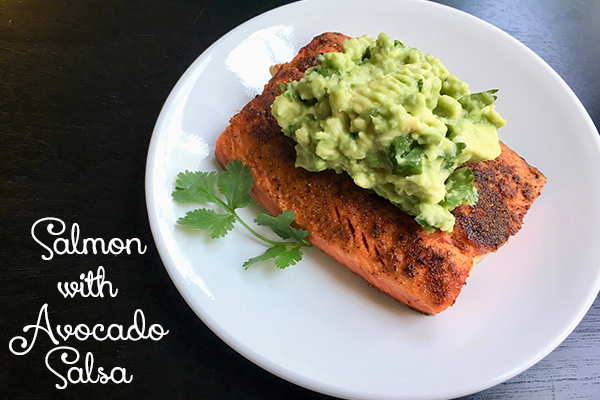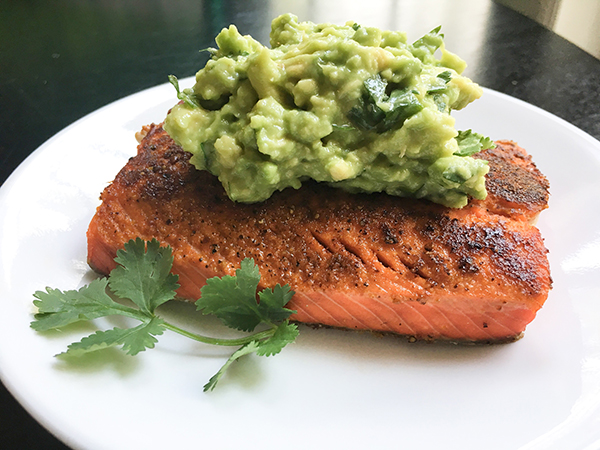Vitamin D (technically, a hormone) plays a role in just about every aspect of our health. It’s not only important for bone health, it also plays a role in blood glucose regulation, heart disease, autoimmune diseases, brain function, thyroid health and even conditions such as ADHD, Autism and depression. Several years ago, researchers discovered that most body cells have a receptor for Vitamin D, meaning that most of the trillions of cells in our body require Vitamin D to function properly. SO, as you can imagine making sure our babies and children have adequate Vitamin D levels is crucial for proper development.
How much do infants and children need?
The current AAP recommendation is that all infants up to age 1 should have a minimum intake of 400 IU (International Units) of Vitamin D per day beginning soon after birth. The recommended intake jumps to 600 IU per day for children over the age of 1.
How much is in food?
Few foods naturally are good sources of Vitamin D. Fatty fish like salmon are the best sources for naturally occurring Vitamin D. For example, 3 ounces of salmon contains around 400-600 IU of Vitamin D. Smaller amounts of Vitamin D are found in cheese and eggs, and of course most milk is fortified with D (typically 100 IU per 8 ounces). Some processed foods are also fortified with Vitamin D.
Is the sun a reliable source?
Vitamin D can be synthesized by the skin through UV light exposure. However, there are many factors that can interfere with this such as latitude, time of day, season, and even air pollution. Plus, concerns about skin cancer lead many of us to use sunscreen when we do go outside, which will block Vitamin D synthesis. The AAP recommends keeping babies out of the sun as much as possible due to their highly sensitive skin.
Vitamin D Deficiency in Infants and Children
Low Vitamin D levels are very common in our modern world. Studies show that not only do the majority of pregnant women have insufficient levels of vitamin D, but the majority of un-supplemented infants do as well. One study showed that in a sample of low risk pregnant women, only 30% had sufficient levels of Vitamin D. Another study showed that as high as 61% of kids had insufficient Vitamin D levels and another study found that 40% of un-supplemented breastfed babies were deficient by 4 months of age! This is something we need to pay attention to.
Is your child getting enough Vitamin D? Studies show that most aren't. Find out why it's important and how to increase Vitamin D levels. #saslife Click To TweetSupplementing with Vitamin D is an easy fix for inadequate Vitamin D intake, limited sun exposure, or both, which results in low Vitamin D levels.
When trying to decide which supplement to use, first make sure Vitamin D3, or cholecalciferol, is the form being used. Then take a close look at the ingredients. You don’t need one with added sugars, colors or other fillers.
- For infants, I like these supplements by Carlson and Nordic Naturals.
- For children over the age of one who need a higher dose, try one of these supplements 4-5 days a week by Carlson or Thorne.
If you are unsure of how much to supplement with for your child or yourself, please contact your health care provider.
Salmon with Avocado Salsa
Recipe Adapted From The Cookie Rookie
Makes 4 Servings
Ingredients
For the salmon:
2 lbs salmon cut into 4 portions
1 Tbsp olive oil
1 tsp sea salt
1 tsp ground cumin
1 tsp paprika powder
1 tsp onion powder
½ tsp ancho chili powder
1 tsp black pepper
For the salsa:
1 avocado cubed
½ red onion sliced or diced (optional)
2 limes juiced
1 Tbsp fresh cilantro chopped
Directions
- Mix the salt, chili powder, cumin, paprika, onion and black pepper together.
- Rub the salmon fillets with olive oil and this seasoning mix.
- Refrigerate for at least 30 minutes.
- Pre-heat the grill, or skillet.
- While the grill or skillet is pre-heating, combine salsa ingredients (avocado, onion, cilantro, and lime juice) in a bowl and mix well. Chill until ready to use.
- Grill salmon to desired doneness, most filets will take 5-8, minutes per side. You can also sauté in a skillet for about the same time or for a hands-off approach, bake for 12-15 minutes in a 400ºF oven.
- Top with avocado salsa and enjoy!




